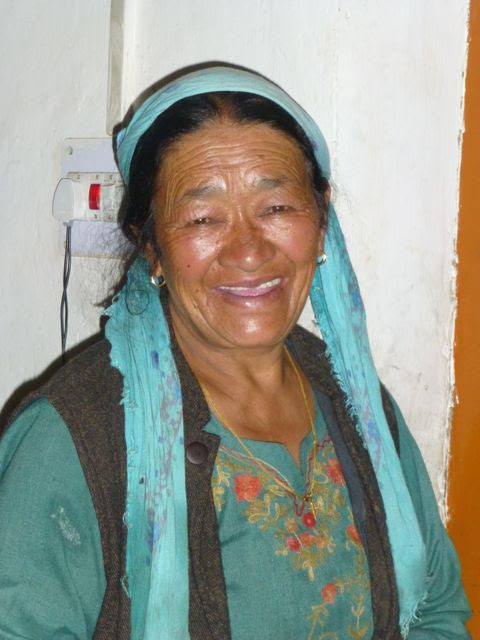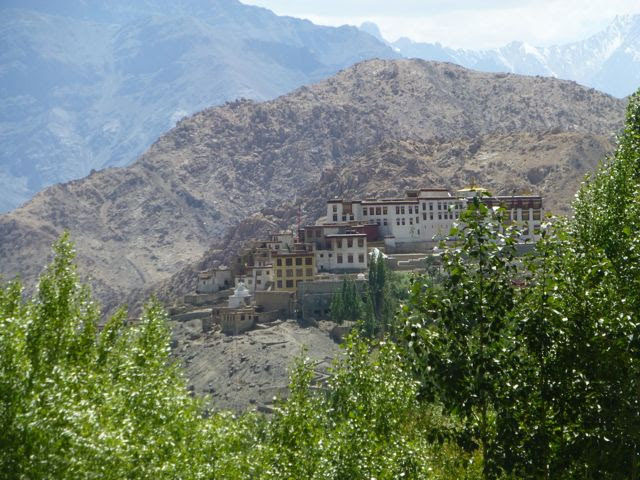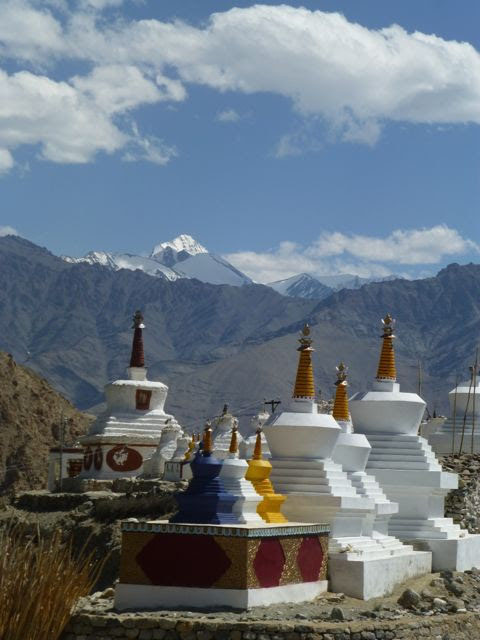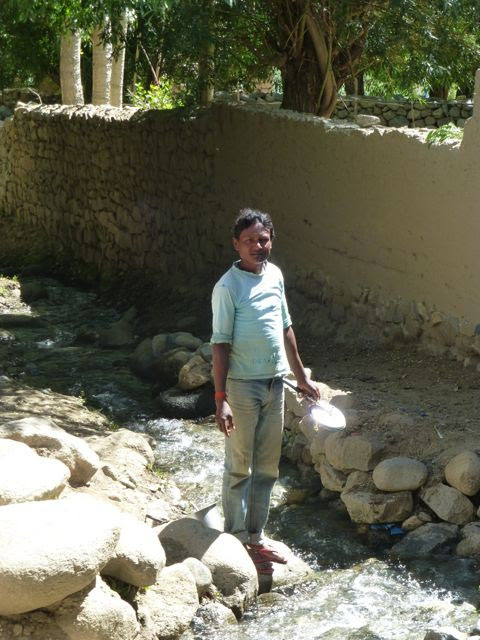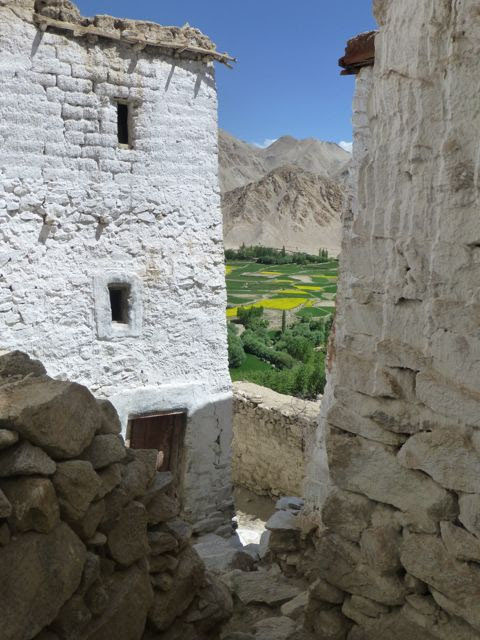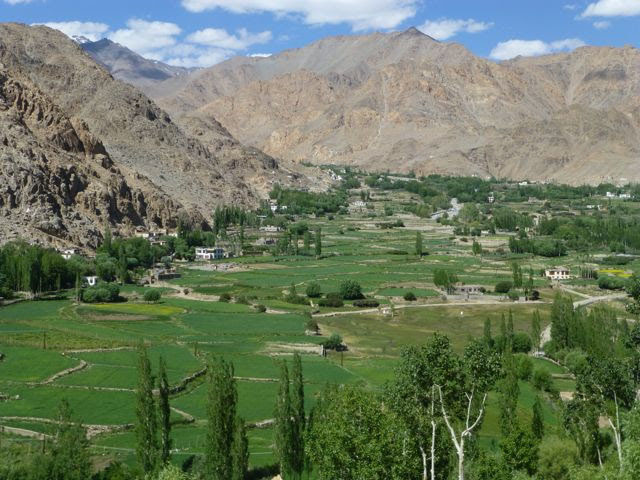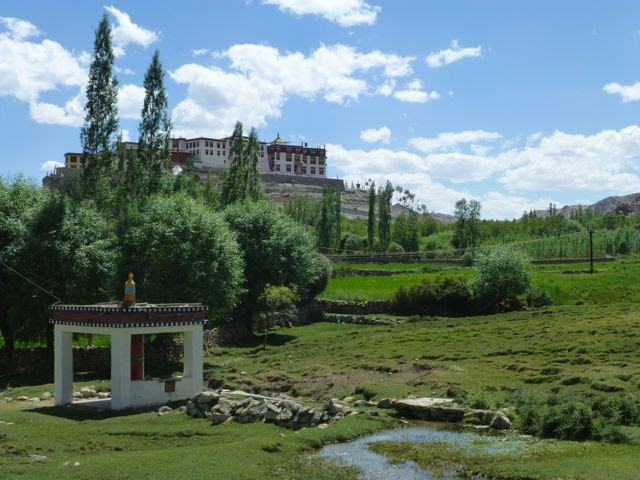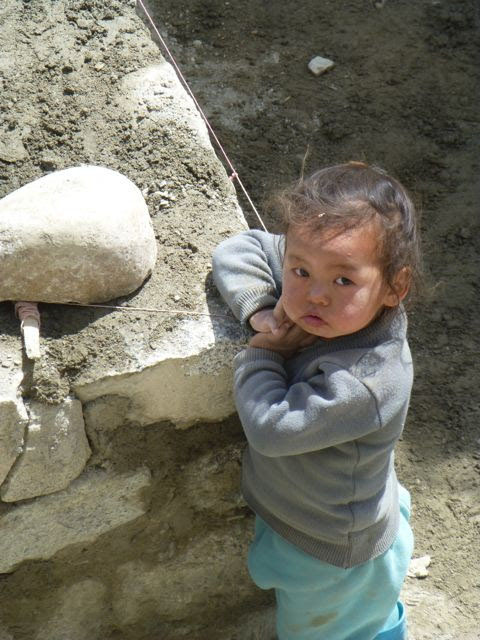Hidden Paradise
Shangri-La. How we conjure with what that evokes. It appears as Hilton’s mystical green eden in Lost Horizon. Shangri-La…. Its promise of love and peace is real but elusive, just out of sight, around the next corner, if we get there.
Where is Shangri-La? Some say it’s in China’s Kunlun mountains, through which we drove last year in Tibet and before that in Tajikistan and China. I didn’t see it, though maybe that’s the fault of the dense smog that obscured most everything. There’s a claim that Pakistan’s Hunza Valley is the true Shangri-La. Others suggest the real earthly paradise of the fictional Shangri-La is in the Himalayas, a hidden valley referenced in Tibetan Buddhist texts as an idyllic and sacred place of refuge.
My personal contribution to the myth is to suggest it’s in Ladakh. Hidden in the steep, bone-dry hills of this 13,300-foot plateau which receives 3.5 inches of rain a year, are narrow valleys. They run like spokes from the calm, Buddhist town of Leh, each one is a separate treasure of tranquility and beauty such as I’ve never experienced elsewhere.
Under the serene protection of a Tibetan monastery perched on a nobby brown hill, stands a collection of stupas said to house sacred relics related to Buddha.
The oldest have sides made soft by centuries of erosion, while newer ones are tall and sharply defined. Some have mani walls, built up over the centuries by pile one rock on another, and these walls can be many yards long. All stupas, even the most crumbling are freshly white-washed and draped with prayer flags, in honor of the presence of the Dalai Lama in Leh,
Just beyond is a patchwork of emerald and canary fields divided by stone walls and stands of slender poplars, leaves fluttering.
Glassy blue-grey water gushes down narrow canals that draw from tumbling rivers swollen with snowmelt. A willow casts a deep shade on the dirt road leading to the village, where rose bushes bursting with pink blooms hug the white stucco houses.
Each flat roof is already partially covered with the stacks of hay and the dung patties that are needed to see each family and their livestock through seven months of deep freeze each winter. The cobbles of an ancient lane are bed to a fluffy beige dog which slumbers, impervious to a cluster of flies tickling its nose.
The air is warm, faintly smoky, with a floral perfume of sweet william, geranium and rose.
In the middle of a pasture dotted with brown and black cows, a red gilt prayer wheel spins, casting its prayers to the wind, yet no one walks around it. Completing each revolution it makes a slight, ee-oo squeak, silently turned by the invisible hand of water power. Red finches hop and peck, pigeons do a languid mating dance, issuing their burbling coo. A woman with a stick moves goats from one field to the next and in the distance the pock-pock of a mallet on stone suggests a summer building project is underway.
If this isn’t Shangri-La. what is?










